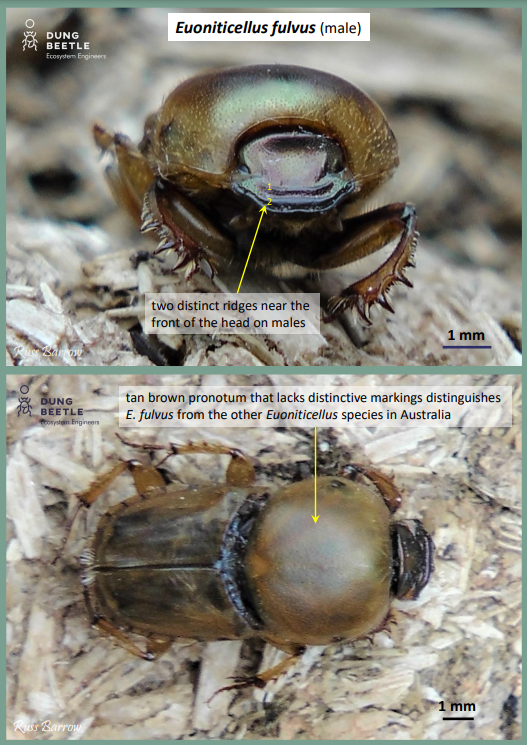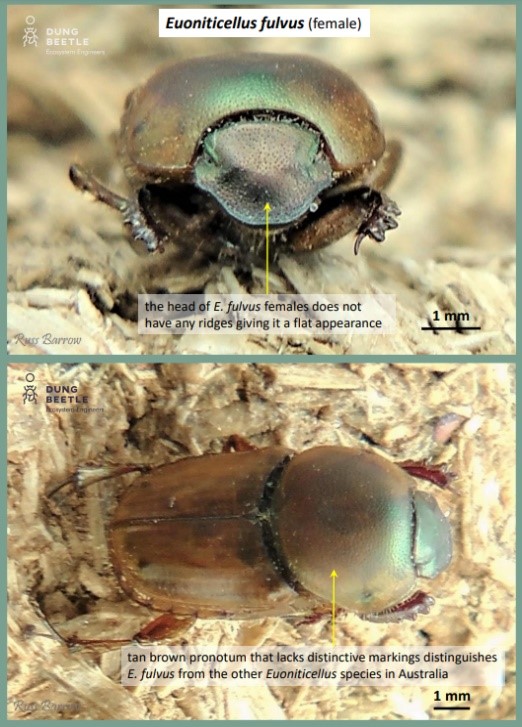Euoniticellus fulvus (introduced)
Download a PDF version of this page: Euoniticellus fulvus (introduced) ![]() [PDF File - 507.2 KB]
[PDF File - 507.2 KB]


Size
8–12 mm

Colour
Golden/ yellow to brown, without speckling on pronotum
Horns
None. Males have two ridges at front of head, but females have none.
Similar species
E. fulvus is similar to other species of Euoniticellus including E. intermedius, E. pallipes and E. africanus. However, E. fulvus is slightly smaller and the lack of markings set it apart.
Flight time
Day
Active seasons
Spring to autumn
Distribution in Australia
Victoria, WA, SA, Tas, NSW

Origin
Native to western and central Europe, the Middle East and north Africa
South West Prime Lamb Group (SWPLG) demonstrations
E. fulvus has been caught at all SWPLG properties hosting traps. It is commonly found with Onthophagus taurus and Onthophagus binodis, though in smaller numbers.
Lifecycle
Nests are about 20 cm below the surface in which several brood masses are constructed, each with one egg. Adults develop in approximately 5–8 weeks.
Dung burial
E. fulvus buries dung to around 20 cm.
Preferences and establishment
The number of beetles present on a farm is largely dependent on the amount of dung available. E. fulvus can be introduced as starter colonies and is provided by some dung beetle suppliers. A list of dung beetle suppliers can be found on the DBEE link below.